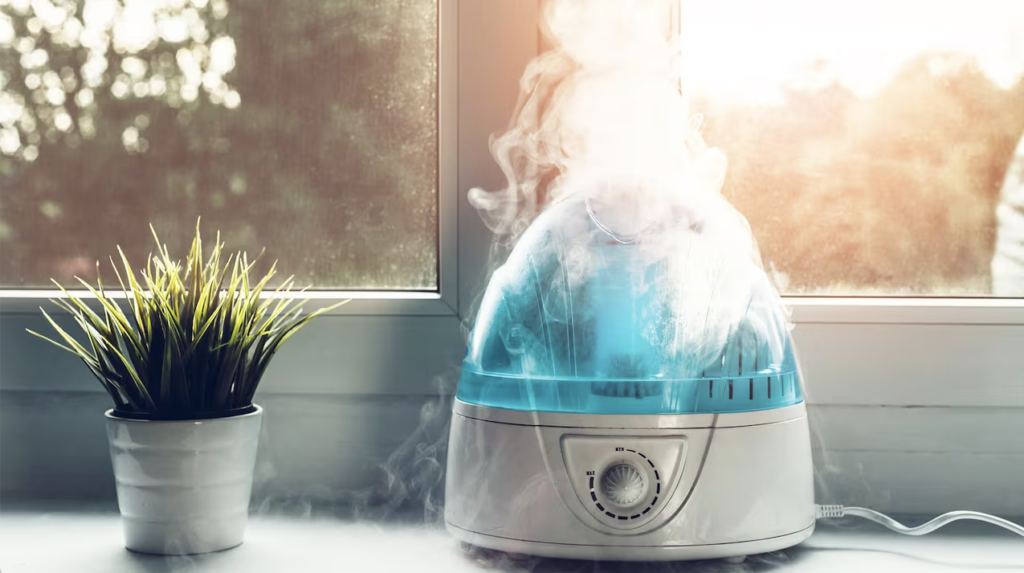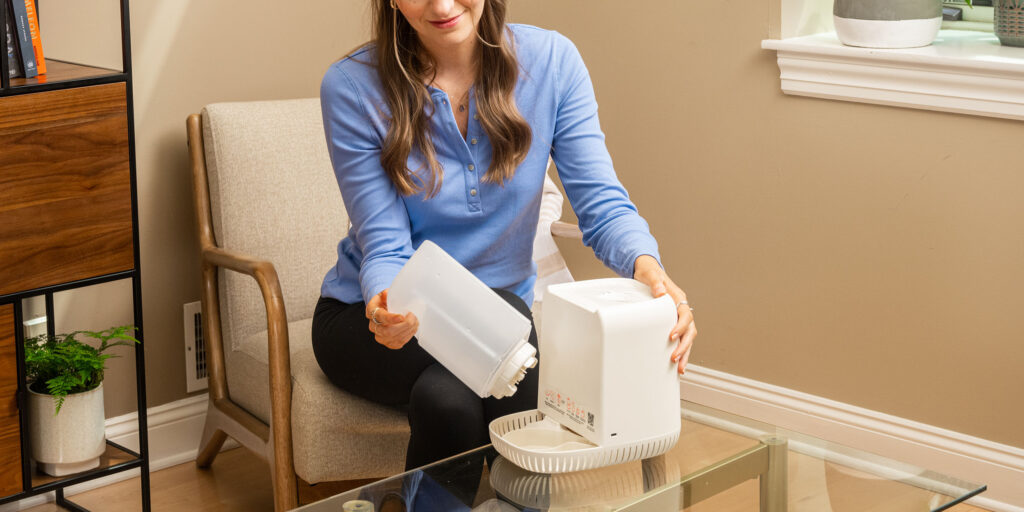Air humidifiers are essential devices for maintaining comfortable indoor humidity levels. This is especially crucial during the heating season, dry summer weather, or regions with highly arid climates. Insufficient indoor humidity can negatively affect your skin mucous membranes and increase the risk of contracting infections like the flu. By keeping your home’s humidity within the range of 40% to 60%, you can reduce the mobility of bacteria and viruses, thus decreasing the likelihood of illness.
Where to Place Your Air Humidifier
When deciding where to place your humidifier, consider some important factors:
- Avoid Soft Surfaces: To prevent accidental spills, avoid placing the humidifier on soft surfaces like couches, beds, or high-pile carpets.
- Protect Your Floors: For surfaces like hardwood, laminate, or parquet flooring, which are vulnerable to moisture, elevate the humidifier by at least 50 cm from the floor. Use a stand or a table to ensure it doesn’t come into direct contact with your sensitive flooring.
- Keep Away from Electrical Devices: Maintain a minimum distance of 30-60 cm between the humidifier and electronic appliances to avoid potential damage or accidents.
- Child and Pet Safety: Ensure the humidifier is out of reach for children and pets to prevent accidents or tampering.
What Water to Use in Your Air Humidifier

The type of water you use in your humidifier plays a significant role in its efficiency and longevity. Here’s what you should consider:
- Best Choices: It’s recommended to use distilled, filtered, or bottled drinking water in your humidifier. These water sources have low to no mineral content, reducing the scale buildup on the humidifier’s components and extending filter life.
- Avoid Tap Water: Refrain from using tap water because it can be too complex and contain various minerals. Over time, this can lead to mineral deposits, known as “white dust,” settling on surfaces. These deposits can cause unpleasant odors and affect the humidifier’s performance.
- Boiled Water: Using boiled water is also not advisable, as it may leave residues and impurities that can accumulate inside the humidifier.
How to Operate Your Air Humidifier
Properly using your air humidifier is crucial to maintaining healthy indoor humidity levels. Here’s a general guide:
- Read the Instructions: Familiarize yourself with your specific humidifier’s manual, as operating procedures may vary between models.
- Fill the Reservoir: Ensure the humidifier is unplugged, then fill the water reservoir to the “maximum” or indicated fill line. Don’t overfill the tank.
- Select Settings: Plug in the device and choose your desired humidity level or mode, following the manufacturer’s recommendations.
- Monitoring Humidity: Many humidifiers include built-in humidity sensors or digital displays to monitor indoor humidity levels. Use this feature, if available, to maintain optimal humidity.
- Scheduled Operation: Some models allow you to schedule your humidifier to run at specific times. This is useful for maintaining consistent humidity levels while conserving energy.
- Shutting Down: When the humidity reaches your desired level, or if you’re leaving your home for an extended period, turn off or unplug the humidifier.
Maintenance and Care

Proper maintenance ensures your humidifier works efficiently and remains hygienic:
- Empty and Refill: After each use, empty the water reservoir and rinse it thoroughly. Before refilling, make sure the humidifier is dry.
- Clean Regularly: Clean your humidifier’s water tank and any removable parts every 1-2 weeks using a soft sponge, warm, soapy water, and a vinegar solution for disinfection if the manufacturer recommends.
- Change Filters: If your humidifier has a filter, follow the manufacturer’s guidelines for replacement. Some models have washable filters that require cleaning, while others need replacing at specific intervals.
- Odor Management: If your humidifier develops unpleasant odors, turn it off, clean it, and use fresh water to refill it. You can also add vinegar or hydrogen peroxide to the water to eliminate lingering smells.
Safety Tips
To ensure safe and effective operation:
- Moving Your Humidifier: Always turn off your humidifier before moving it to prevent water from spilling onto the device’s electrical components.
- Vent Openings: Keep the vent openings on the humidifier unobstructed to maintain proper airflow and prevent damage to the device.
- Inspect for Damage: Inspect the humidifier for any cracks, damages, or water leaks. If you notice any issues, discontinue use and consult the manufacturer or a technician.
- Aromatherapy Oils: Avoid adding essential oils to your humidifier unless it’s designed for aromatherapy. Using oils in a non-compatible humidifier can clog the filter and affect performance.
- Turn Off During Ventilation: When ventilation by opening windows, it’s advisable to turn off your humidifier. Fresh air intake reduces the need for additional humidity indoors.
By following these guidelines, you can maximize the benefits of your air humidifier while ensuring the safety and well-being of your indoor environment. Proper use and maintenance will help create a comfortable and healthy living space.

